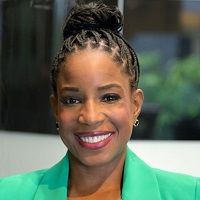Loosening the Reins in Philanthropy Could Mean Better Outcomes
Corporate philanthropy has trouble responding quickly to urgent needs, but that could change if they worked well with nonprofits and the communities they serve.


"But … we had a plan."
In the world of corporate giving, even the most experienced can find themselves stuck uttering these famous last words when a philanthropy initiative fizzles unexpectedly.
What’s the biggest reason?
From just $107.88 $24.99 for Kiplinger Personal Finance
Become a smarter, better informed investor. Subscribe from just $107.88 $24.99, plus get up to 4 Special Issues

Sign up for Kiplinger’s Free Newsletters
Profit and prosper with the best of expert advice on investing, taxes, retirement, personal finance and more - straight to your e-mail.
Profit and prosper with the best of expert advice - straight to your e-mail.
Success in the nonprofit world requires agility, which could mean being flexible enough to revise — or ditch — a plan to meet the needs of the community.
Corporate philanthropy typically follows a strategic roadmap built upon high-level, neatly aligned-to-business objectives that often show little variance year in and year out. Favor is given to those who can best color inside the lines. Leaders are leery of loosening the reins, afraid to let those operating on the ground take some measure of control and make decisions as they see fit. There is a built-in risk-averse inflexibility.
An example of corporate philanthropy’s limits
The limitations inherent to most corporate philanthropy programs took center stage during the COVID-19 pandemic. One prime example is the regrettable development that took place when schools shuttered, and students began studying remotely. While supporting virtual learning was an obvious priority, many corporate programs dedicated to improving educational outcomes had difficulties making the pivot. Students, particularly those in underserved neighborhoods, fell behind, with many lacking laptops and even internet service. This failure to quickly respond to an immediate need exacerbated the achievement gap.
Nonprofits, on the other hand, are well known for their agility; in fact, they must be flexible to survive. Their success lies in maintaining a deep understanding of the changing needs of the communities they serve and reacting dynamically to produce the most ideal outcomes. And when they are staffed and managed by people from the communities they serve, the connections to their clients are even stronger.
And herein lies an important dynamic: Corporate philanthropy, nonprofits and the communities they support should have a symbiotic relationship to keep the flow of information moving and a similar ethos in their respond-to-need speed. At the core of this relationship is a bond of trust as well as a willingness to accept some risk in order to truly achieve the impacts we profess to want to support.
Strengthen bonds and actively listen
The strongest bonds are formed from a place of empathy, where listening and learning take priority over solving and fixing. To achieve meaningful change, it is important to engage people who have expertise in philanthropic priorities, and strong connections and lived experiences, in the communities served.
Granting managers need to build relationships and show up; by being visible and interacting with organizations, leaders and neighbors, they can authentically serve as eyes and ears in the community. They should be trusted equally by their nonprofit partners and corporate business partners who ultimately rely on their expertise. As such, they will be perfectly positioned to identify organizations with actionable ideas for the kind of program development, improvement and resource management that is most responsive to the needs of a community.
Eliminate red tape and rethink stringent rules
Another way corporate philanthropy might rethink flexibility and the symbiotic relationship with nonprofits and communities is in reassessing the stringent requirements around data reporting and other administrative tasks. While it is true that support is difficult to measure without metrics, there needs to be a balance.
For decades, rule-makers in corporate philanthropy have demanded to see reams of data to prove a return on investment; it’s not rare to see impact reports with 25 pages of data points. Of course, this can prove burdensome for nonprofits; crunching the numbers at a granular level requires funding and personnel, and this is exacerbated by every funder needing unique data to meet their particular needs.
Organizations spend significant time and money to meet the needs of funders to better understand the impacts of the dollars they invest rather than directing those resources into actually achieving those impacts. This drain on resources effectively reduces the impact of money donated to critical programs, which amounted to almost half a trillion dollars in 2020 alone. Those who implement such requirements often find their money didn’t go as far as it could have to help the community.
Another instance where corporate philanthropists need to be flexible is in the funding cycle. An organization might give out money at specific times of the year, but when those periods don’t coincide with nonprofits’ needs, it can represent another lost opportunity.
I'm hoping we see a trend where more in corporate philanthropy become willing to drop the status quo of exclusively funding mega-charities with large administrative operations that can easily meet their requirements. Instead, more time and effort should be put into building relationships with diverse-led, smaller and newer nonprofits, lowering their barriers to entry and supporting innovations to help them boost capacity.
Implementing ideas, such as standardizing and streamlining data collection and reporting among organizations working in a specific sector, could be adopted as a means to both reduce reporting burdens and encourage resource-sharing.
We're committed to serving our communities, so let's do everything we can to engage the ones best positioned to understand their needs. And let's continually ask ourselves the question: How can we do it better?
Related Content
- Philanthropy Needs Innovation to Help With Social Problems
- How to Maximize Your Impact With Strategic Philanthropy Tools
- Six Charitable Giving Strategies: Feel Good and Cut Your Taxes
- How to Find Room for Philanthropy Despite Challenging Times
- Five Ways Companies Can Boost Charitable Giving by Employees
Profit and prosper with the best of Kiplinger's advice on investing, taxes, retirement, personal finance and much more. Delivered daily. Enter your email in the box and click Sign Me Up.

Shelley R. Sylva is the Head of Corporate Citizenship at TD Bank, where she also led the "TD Ready Commitment," a billion-dollar philanthropic initiative focused on social and environmental issues. Shelley is a 2021 Philadelphia Business Journal "Women of Distinction" honoree.
-
 'Donroe Doctrine' Pumps Dow 594 Points: Stock Market Today
'Donroe Doctrine' Pumps Dow 594 Points: Stock Market TodayThe S&P 500 rallied but failed to turn the "Santa Claus Rally" indicator positive for 2026.
-
 The Wealth Equation: Balancing Money and Stress
The Wealth Equation: Balancing Money and StressSponsored Don’t let assets be a liability that strains your family.
-
 Is Your Emergency Fund Running Low? Here's How to Bulk It Up
Is Your Emergency Fund Running Low? Here's How to Bulk It UpIf you're struggling right now, you're not alone. Here's how you can identify financial issues, implement a budget and prioritize rebuilding your emergency fund.
-
 Is Your Emergency Fund Running Low? Here's How to Bulk It Back Up
Is Your Emergency Fund Running Low? Here's How to Bulk It Back UpIf you're struggling right now, you're not alone. Here's how you can identify financial issues, implement a budget and prioritize rebuilding your emergency fund.
-
 An Expert Guide to How All-Assets Planning Offers a Better Retirement
An Expert Guide to How All-Assets Planning Offers a Better RetirementAn "all-asset" strategy would integrate housing wealth and annuities with traditional investments to generate more income and liquid savings for retirees.
-
 7 Tax Blunders to Avoid in Your First Year of Retirement, From a Seasoned Financial Planner
7 Tax Blunders to Avoid in Your First Year of Retirement, From a Seasoned Financial PlannerA business-as-usual approach to taxes in the first year of retirement can lead to silly trip-ups that erode your nest egg. Here are seven common goofs to avoid.
-
 How to Plan for Social Security in 2026's Changing Landscape, From a Financial Professional
How to Plan for Social Security in 2026's Changing Landscape, From a Financial ProfessionalNot understanding how the upcoming changes in 2026 might affect you could put your financial security in retirement at risk. This is what you need to know.
-
 6 Overlooked Areas That Can Make or Break Your Retirement, From a Retirement Adviser
6 Overlooked Areas That Can Make or Break Your Retirement, From a Retirement AdviserIf you're heading into retirement with scattered and uncertain plans, distilling them into these six areas can ensure you thrive in later life.
-
 I'm a Wealth Adviser: These Are the 7 Risks Your Retirement Plan Should Address
I'm a Wealth Adviser: These Are the 7 Risks Your Retirement Plan Should AddressYour retirement needs to be able to withstand several major threats, including inflation, longevity, long-term care costs, market swings and more.
-
 High-Net-Worth Retirees: Don't Overlook These Benefits of Social Security
High-Net-Worth Retirees: Don't Overlook These Benefits of Social SecurityWealthy retirees often overlook Social Security. But timed properly, it can drive tax efficiency, keep Medicare costs in check and strengthen your legacy.
-
 Do You Have an Insurance Coverage Gap for Your Valuables? You May Be Surprised to Learn You Do
Do You Have an Insurance Coverage Gap for Your Valuables? You May Be Surprised to Learn You DoStandard homeowners insurance usually has strict limits on high-value items, so you should formally "schedule" these valuable possessions with your insurer.